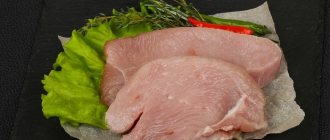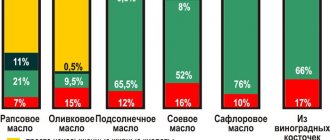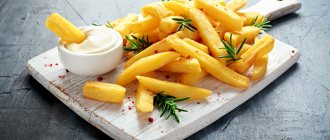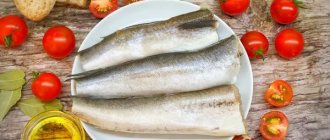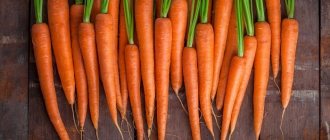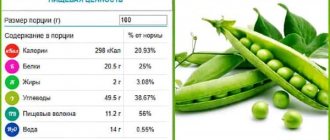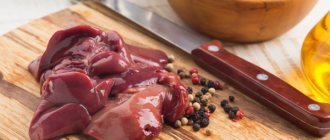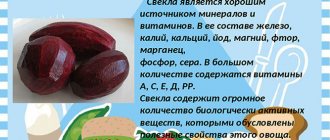In cooking, turkey stands out among other birds due to its large size, as well as its dietary and healthy fillet. Therefore, dishes made from it are popular among athletes and people on a diet. The least amount of fat is contained in the breast of the carcass, which is additionally enriched with easily digestible proteins and beneficial elements. Depending on the cooking method, the quantitative indicator of the calorie content of the dish changes.
Nutritional value, calorie content
Turkey breast (calories and nutritional value are taken into account when preparing dishes) does not contain coarse fibers that overload digestion. Therefore, boiled fillet is often used during the recovery period after operations.
The benefits and nutritional value of turkey breast lie in its composition:
- Protein. It is a source of energy, strengthens the immune system and fights infection.
- Potassium. Normalizes the rhythm of contraction of the heart muscle, maintains water-salt balance and activates the activity of brain cells.
- Calcium. Restores blood clotting, participates in the removal of cholesterol and is responsible for the strength of bone tissue.
- Sodium. Activates the production of enzymes in the digestive system, normalizes blood pressure.
- Selenium. Improves the protective functions of the immune system, prevents the development of cancer cells and normalizes the activity of the thyroid gland.
- Phosphorus. Its quantity is not inferior to fish products. The substance is responsible for the strength of bone tissue, normalizes heart rate and activates muscle and mental activity.
- Sulfur. It has an antimicrobial effect, improves food absorption and promotes the restoration of joint tissue.
- Manganese. Normalizes the activity of the nervous system, improves metabolic processes and prevents the development of cancer.
- Zinc. Increases sperm motility, reduces the risk of miscarriage and prevents the development of cancer.
- Copper. It has antibacterial and antitumor effects, and also normalizes the activity of the nervous system.
- Vitamins (A, C, PP, as well as group B and K). They help strengthen the immune system, normal heart function and improve metabolic processes in the body.
- Tryptophan. The substance is involved in the production of a hormone responsible for the process of falling asleep and quality of sleep.
- Valin. Normalizes the activity of the nervous and immune systems, activates metabolic processes.
- Threonine. Supports the functioning of the cardiovascular and nervous systems and normalizes metabolic processes.
- Lysine. Prevents early aging of the body.
- Arginine. Participates in the normalization of blood pressure, restores potency and lowers the amount of cholesterol in the blood.
Turkey breast
Eating turkey breast during pregnancy and lactation promotes the proper formation of the fetus and the development of the child (as it contains folic acid). This list is not complete; only the predominant useful elements are listed. When choosing how to cook turkey breast, you should consider how the caloric value changes.
But regardless of the method of preparing fillet, its beneficial properties do not change.
| Cooking method | Caloric value (kcal) |
| Raw | 190-200 |
| Raw without skin | 80-88 |
| Boiled | 80-90 |
| For a couple | 85-90 |
| Stewed | 110-120 |
| Fried | 165-170 |
| Baked | 180-190 |
| Ground meat | 160-165 |
But, despite the low calorie content and enormous nutritional value, breast is contraindicated for consumption in the presence of inflammatory processes in the kidneys or impaired removal of uric acid from the body.
Composition and calorie content
Turkey is a dietary, low-calorie meat that is recommended to be included in the diet of both men and women. Poultry meat, heart, liver and stomachs have a rich chemical composition and are used in preparing dishes for a healthy and proper diet.
The calorie content of fresh turkey per 100 g is 275.8 kcal. Depending on the method of heat treatment and the selected part of the bird, the energy value changes as follows:
- boiled turkey – 195 kcal;
- baked in the oven – 125 kcal;
- steamed – 84 kcal;
- fried without oil – 165 kcal;
- stewed – 117.8 kcal;
- poultry stomachs – 143 kcal;
- liver – 230 kcal;
- heart – 115 kcal;
- turkey fat – 900 kcal;
- skin – 387 kcal;
- breast without/with skin – 153/215 kcal;
- legs (shin) with skin – 235.6 kcal;
- thighs with skin – 187 kcal;
- fillet – 153 kcal;
- wings – 168 kcal.
Nutritional value of raw poultry per 100 g:
- fats – 22.1 g;
- proteins – 19.5 g;
- carbohydrates – 0 g;
- water – 57.4 g;
- dietary fiber – 0 g;
- ash – 0.9 g.
The ratio of turkey meat BJU per 100 g is 1:1.1:0, respectively. A remarkable feature of the product is that the protein contained in the composition is absorbed by the body by approximately 95%. Thanks to this, fillet (boiled, baked, etc.), as well as other parts of the bird, are suitable for sports nutrition and are recommended for people who want to lose extra pounds without compromising muscle mass.
The chemical composition of turkey per 100 g is presented in table form:
| Name of substance | Quantitative content in the product composition |
| Chromium, mg | 0,011 |
| Iron, mg | 1,4 |
| Zinc, mg | 2,46 |
| Manganese, mg | 0,01 |
| Cobalt, µg | 14,6 |
| Potassium, mg | 210 |
| Sulfur, mg | 247,8 |
| Calcium, mg | 12,1 |
| Phosphorus, mg | 199,9 |
| Magnesium, mg | 18,9 |
| Chlorine, mg | 90,1 |
| Sodium, mg | 90,2 |
| Vitamin A, mg | 0,01 |
| Vitamin B6, mg | 0,33 |
| Thiamine, mg | 0,04 |
| Vitamin B2, mg | 0,23 |
| Folates, mg | 0,096 |
| Vitamin PP, mg | 13,4 |
| Vitamin E, mg | 0,4 |
In addition, the product contains mono- and polyunsaturated fatty acids, such as omega-3 in the amount of 0.15 g, omega-9 - 6.6 g, omega-6 - 3.93 g, linoleic - 3.88 g per 100 g. Meat contains replaceable and essential amino acids.
Benefits and contraindications for the diet
Turkey breast (the calorie content of dishes plays an important role when creating a menu for weight loss) is the main ingredient in the diet of people on a diet.
The choice of this product is due to its following properties:
- acceleration of metabolism, resulting in accelerated weight loss;
- thanks to the high protein content, the feeling of fullness lasts for a long time;
- removes toxins, waste and excess cholesterol from the body;
- the elements that make up the breast prevent sagging muscles and skin after weight loss;
- normalizes the production of enzymes in the gastrointestinal tract, resulting in improved digestion.
When losing weight by eating turkey breast, the result is permanent for a long time due to the normalization of metabolism. To speed up the achievement of results, it is recommended to combine turkey breast fillet with vegetable fiber.
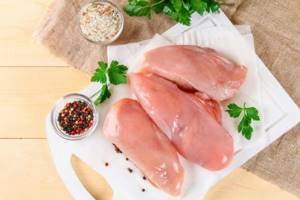
The maximum daily intake of turkey meat is:
- for males – 150 g;
- for females – 130 g;
- for children under 14 years old – 80 g.
It is important that if you follow a mono-diet of turkey breast, its duration should not be more than 4 days, since, despite the rich nutritional composition, it does not contain all the necessary elements. And the lack of fat (necessary for the production of sex hormones) can lead to disruption of the reproductive organs.
Also, this diet is contraindicated in the presence of pathologies in the digestive tract and in case of poor absorption of protein foods.
Baked turkey calories per 100 grams
- Stuff the fillet with garlic cloves.
- Spread vegetable oil on top.
- Season thoroughly with salt, pepper and sweet paprika.
- Place the fillet in a mold; you can cover it with foil.
- Preheat the oven to high for 15 minutes. Place the fillet there for 2 hours. Do not open the oven, otherwise the heat will go away.
- Remove from oven and cut into portions.
- Turkey fillet - 2 kg.
- Salt (to taste) - 2 gr.
- Garlic - 8 teeth.
- Black pepper (to taste) - 2 gr.
- Vegetable oil - 4 tbsp.
- Paprika (sweet)
- to taste) - 2 gr.
Nutritional value of the “Baked Turkey” dish (per 100 grams):
The calorie content of 100 grams of baked turkey meat (of which 29.1 g of protein, 3.8 g of fat and 0.0 g of carbohydrates) is 159 kcal or 664 kJ. 159 kcal per 100 g is 6.9% of the average daily value.
How to burn calories from 100 g of baked turkey meat
For example, to burn all the calories from 100 grams of baked turkey meat, you will need 13 minutes of running or 2 hours 31 minutes of sleep.
ActivityCalorie content per day per 100 g>'> >'> >'> >'> >'> >'> >'> >'> >'> >'> >'> >'> >'> >'> >' >
| Dream | 2 hours 31 minutes | 10% |
| Meditation | 2 hours 16 minutes | 9% |
| Rest | 2 h 04 min | 9% |
| Reading books, Internet | 1 hour 45 minutes | 7% |
| Sex | 1 h 05 min | 5% |
| Yoga, Pilates | 0h 43 min | 3% |
| Dancing | 0 h 40 min | 3% |
| Walking | 0 h 35 min | 2% |
| Football | 0h 21 min | 1% |
| Swimming | 0 h 20 min | 1% |
| Abs workout | 0h 18 min | 1% |
| Power training | 0h 18 min | 1% |
| A ride on the bicycle | 0h 17 min | 1% |
| Jumping rope | 0 h 14 min | 1% |
| Run | 0 h 13 min | 1% |
How many calories are in proteins, fats, carbohydrates
Calories in fat
35 kcal - 23%. Calories in proteins
116 kcal - 77%. Calories in carbohydrates
Sources of data on the chemical composition and nutritional value of products:
- US department of agriculture (USDA)
- Directory “Chemical composition of Russian food products” (Institute of Nutrition of the Russian Academy of Medical Sciences. Edited by Corresponding Member of the Moscow Aviation Institute, Professor I.M. Skurikhin and Academician of the Russian Academy of Medical Sciences, Professor V.A. Tutelyan)
Report errors and inaccuracies
- Weight with waste 161.3 g Waste: bone, veins, films 36%, skin and subcutaneous fat 7% (38% of weight). The calculations use the weight of only the edible part of the product.
Listed below are the nutrient standards that apply to the site.
Turkey, breasts, meat [PRODUCT REMOVED]
rich in vitamins and minerals such as: vitamin B2 - 17.8%, choline - 13.3%, potassium - 12.1%, phosphorus - 20.3%, selenium - 41.5%, zinc - 11.1%
- Vitamin B2
is involved in redox reactions, helps to increase the color sensitivity of the visual analyzer and dark adaptation. Insufficient intake of vitamin B2 is accompanied by impaired condition of the skin, mucous membranes, and impaired light and twilight vision. - Choline
is part of lecithin, plays a role in the synthesis and metabolism of phospholipids in the liver, is a source of free methyl groups, and acts as a lipotropic factor. - Potassium
is the main intracellular ion that takes part in the regulation of water, acid and electrolyte balance, and is involved in the processes of conducting nerve impulses and regulating blood pressure. - Phosphorus
takes part in many physiological processes, including energy metabolism, regulates acid-base balance, is part of phospholipids, nucleotides and nucleic acids, and is necessary for the mineralization of bones and teeth. Deficiency leads to anorexia, anemia, and rickets. - Selenium
is an essential element of the antioxidant defense system of the human body, has an immunomodulatory effect, and is involved in the regulation of the action of thyroid hormones. Deficiency leads to Kashin-Beck disease (osteoarthritis with multiple deformities of the joints, spine and limbs), Keshan disease (endemic myocardiopathy), and hereditary thrombasthenia. - Zinc
is part of more than 300 enzymes and is involved in the processes of synthesis and breakdown of carbohydrates, proteins, fats, nucleic acids and in the regulation of the expression of a number of genes. Insufficient consumption leads to anemia, secondary immunodeficiency, liver cirrhosis, sexual dysfunction, and the presence of fetal malformations. Research in recent years has revealed the ability of high doses of zinc to disrupt the absorption of copper and thereby contribute to the development of anemia.
How to choose ingredients
Turkey breast is an unpretentious product that can be combined with almost any side dish, using any cooking method. But the best option is stewed breast with vegetables or mushrooms, served with white wine. This cooking method preserves the benefits of the product and low calorie content.
It is recommended to serve the breast with vegetables:
- with boiled or baked potatoes;
- with stewed or fresh cabbage, including broccoli;
- with stewed green beans.
When preparing a side dish, you can improve the appearance and aroma by adding carrots and garlic. Turkey breast can also be served with rice, buckwheat or pearl barley. The product can also be combined with pasta, but this side dish adds calories to the dish.
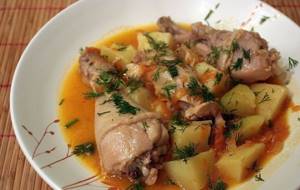
It is important that the fillet is beneficial for the body; the following rules must be followed when choosing it:
- buy chilled breast, and, if possible, fresh;
- the meat should be light pink in color with no white spots or bruises;
- the fillet should not be chapped, light moisture is allowed;
- if the fillet is sold in a package, then it should not contain a lot of liquid;
- when pressing on the meat fibers, they should quickly restore their shape.
Also, the breast should not have any foreign odors, especially the presence of bleach and other chemicals.
Dietary properties of turkey
Turkey meat is considered not only one of the most dietary, but also one of the highest quality. Scientists have repeatedly proven that turkey meat is easily digestible in any form (fried, boiled or cooked in the oven). It contains almost no cholesterol, which is an advantage over other types of meat.
Turkey is considered dietary due to its relatively low calorie content; the meat of this bird is recommended for people with a sensitive stomach, for example, with gastritis or ulcers. In addition, it is actively used in children's diets.
However, you should not eat too much of it. Proper nutrition should consist of different foods and dishes.
Interesting to know: Turkey is rich in various components that the body needs. These include: calcium, phosphorus, potassium, iron, magnesium, etc.
Cooking secrets
Turkey breast (calorie content depends on the cooking method) has a specific smell.
Therefore, to prepare juicy, tender and aromatic fillet, you must follow the following rules:
- when cooking the breast, add bay leaf and allspice to the broth;
- when baking, dill and garlic can improve the aroma;
- you can soak the breast in a sauce with spices or rub it with garlic;
- Before heat treatment, the fillet must be thoroughly washed and finally doused with boiling water, then the juices are retained inside;
- to reduce calorie content from the breast, it is necessary to remove the skin (its calorie content is about 100 kcal);
- when preparing the broth, the meat must be immersed in cold water; if the fillet will be used to prepare the second one, then it is immersed in boiling water;
- when frying, the breast must be basted with the released juice every 15-20 minutes, this will ensure the formation of a crispy crust;
- if the turkey carcass is frozen, then it needs to be thawed in the refrigerator for 24 hours;
- To preserve the juice, it is recommended to soak the fillet in salted water (400 g of salt per 4 liters of water) and leave for about 12 hours;
- Before frying, it is recommended to grease the breast with olive or butter and let it soak in. Bake at a temperature range of 160-170 °C.
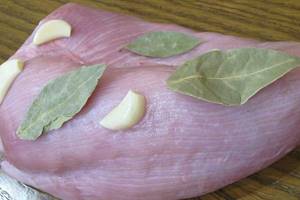
It is important to boil, fry or stew the breast until it is completely cooked (can be determined by the juice that is released when you pierce the fillet with a knife, it becomes transparent), since the meat often contains pathogenic bacteria that die during heat treatment. The cooking process should be at least 30 minutes, frying for at least 40 minutes. After the dish is ready, the meat should lie in the broth or in a frying pan under the lid for at least 15 minutes. This will add juiciness and softness to the meat.
Glycemic index
Turkey is an optimal product for consumption by people with diabetes due to its glycemic index (GI).
First, a little theory.
In medicine, products are divided into three categories:
- from 0 to 50 units is low GI;
- from 50 to 69 – average GI;
- 70 or more – high GI.
People with diabetes should give preference to those foods that have the lowest possible GI, or at least a medium GI, since foods with a high GI status cause a sharp increase in blood sugar levels, which inevitably causes glycemia. As a result, the patient’s condition deteriorates sharply until a diabetic coma occurs.
The glycemic index of turkey meat is 0 - this is a product that does not in any way affect blood sugar levels when consumed, which means that it can and should be included in the diet of diabetics.
However, all this is true only if you are dealing with skinless meat. If you cook meat with it, the index will be quite high, and the fat content of the finished dish will be increased, so before boiling or baking the meat, all the skin must be removed.
Cooking recipes
Turkey breast can be prepared in a variety of ways, both for everyday use and for holidays. Below are the most popular recipes made from simple ingredients.
Fruit salad
The dish is rich in vitamins and minerals and is light but satisfying.
For preparation you will need the following ingredients:
| Grocery list | Quantitative measure | Weight/volume (g/ml) |
| Skinless breast | 1 | 300 |
| Canned pineapple | 1 | 250 |
| Prunes (pitted) | — | 150 |
| Fresh lettuce leaves | 3 | — |
| Salad mayonnaise | 1 | 250-300 |
| Table salt (fine) | — | 3-5 |
| Spices for turkey (can be used for meat) | — | 2-3 |
Description of the cooking process:
- Clean the meat from film and veins and rinse. Next, cut into strips 1-1.5 cm wide.
- Mix the breast pieces with the spices. Let stand for 20 minutes.
- Fry the fillet over medium heat. Leave to cool.
- Pour washed prunes with hot water for 5 minutes. Next, cut into strips.
- Cut the pineapple slices into cubes (ribs about 1 cm long).
- Combine the ingredients, add salt and season with mayonnaise.
- Place on lettuce leaves.
The calorie content of the salad is 180 kcal per 100 g.
Steak
Of the different types of fried meat, this dish is the lowest in calories.
For preparation you will need the following ingredients:
| Grocery list | Quantitative measure | Weight/volume (g/ml) |
| Skinless breast | 1 | 500 |
| Olive oil | — | 50-70 |
| Dried thyme | 2 | — |
| Garlic cloves | — | |
| Butter (softened) | — | 50 |
| Table salt | — | 3-5 |
| Spices for turkey (chicken) | — | 5 |
Description of the cooking process:
- Remove the veins and skin from the fillet and wash it in running water. Cut into steaks no more than 4 cm high.
- Beat the steaks with a special hammer. The height should drop to 2.5 cm.
- Rub the steaks with turkey spices. Leave for 20 minutes.
- Heat oil in a frying pan. Place the steaks, leaving a small distance between them.
- Fry the fillet over high heat. Then the juice will remain in the meat. Average frying time: min on each side.
- Reduce heat and cook steaks for another 5 minutes on each side.
- Mix chopped garlic, thyme and butter. Add this composition to the steaks 2 minutes before cooking.
- Place the fillet on a plate and cover with a napkin.
- Can be consumed on its own or with a side dish.
The caloric value of a steak is 155 kcal.
Chops cooked in the oven
The fillet turns out juicy while maintaining all the beneficial properties.
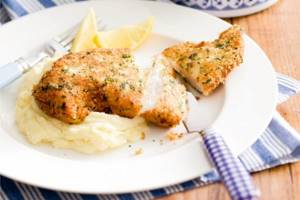
For preparation you will need the following ingredients:
| Grocery list | Quantitative measure | Weight/volume (g/ml) |
| Breast fillet | 1 | 800 |
| Fresh chicken eggs (preferably elite variety) | 2 | — |
| Medium sized tomatoes | — | 500 |
| Cheese (preferably Dutch) | — | 200 |
| Sunflower oil | — | 50-70 |
| Turkey seasonings (possible for chicken) | — | 3-5 |
| Table salt | — | 3 |
Description of the cooking process:
- Remove skin and veins from the fillet. Cut into steaks 1 cm high.
- Rub the breast pieces with turkey spices. Place in a bag (preferably each piece separately). Beat it with a special hammer.
- Beat eggs with salt.
- Heat oil in a frying pan. Dip each chop in the batter and fry in a frying pan for 3 minutes on each side. The fire should be medium.
- Cut the tomatoes into rounds. Grate the cheese.
- Place the fried chops on a baking sheet. Place tomato slices on top and sprinkle with cheese.
- Place the baking sheet in the preheated oven for 10 minutes.
The calorie content of chops is 150 kcal.
Turkey breast and carrot roll
The dish is prepared quickly. Suitable for serving during the holidays.

For preparation you will need the following ingredients:
| Grocery list | Quantitative measure | Weight/volume (g/ml) |
| Skinless breast | 1 | 500 |
| Fresh peeled carrots | 2 | — |
| Garlic cloves | 2 | — |
| Ground pepper (black) | — | 2 |
| Table salt | — | 3 |
Description of the cooking process:
- Remove the film from the breast, wash and cut into 6 pieces.
- Brush the fillets with a mixture of salt and pepper. Leave for 5 minutes.
- Place the meat on a baking sheet so that there are no gaps between the pieces.
- Mix grated carrots and chopped garlic. Spread the mixture onto the fillet.
- Roll the breast with the filling into a roll. Tie with strong threads. Additionally, place in a bag for roasting in the oven.
- Preheat the oven to 170 degrees. Place the meat for 20 minutes.
- After turning off the oven, remove the roll from it after 5 minutes.
The calorie content of the roll is 133 kcal.
Cutlets
The cutlets cook quickly. They stand out for their juiciness and satiety.
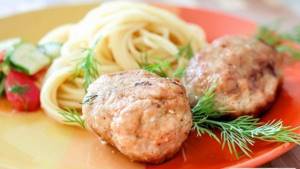
For preparation you will need the following ingredients:
| Grocery list | Quantitative measure | Weight/volume (g/ml) |
| Turkey breast fillet | 1 | 600 |
| Fresh chicken eggs | 2 | — |
| Breadcrumbs (you can make your own) | — | 200 |
| Peeled onion (turnip variety recommended) | 1 | — |
| Sunflower oil | — | 50-70 |
| Turkey spices | — | 5 |
Description of the cooking process:
- Remove skin and veins from the fillet. Cut into 2cm cubes.
- Next, it is advisable to grind the breast in a food processor or by hand.
- Chop the onion using a knife. Mix with eggs and spices.
- Combine onion and meat mixtures. Knead thoroughly.
- Form the minced meat into cutlets. Roll each one in breadcrumbs.
- Fry the cutlets in a hot frying pan for 3-5 minutes on each side
- To remove excess oil, place the finished cutlets on a plate covered with a napkin.
The calorie content of cutlets will be 200 kcal. To reduce calorie content, cutlets can be baked in the oven, in water or in a slow cooker.
Turkey breast in kefir, baked in foil
This dish is recommended in the diet when compiling a diet menu.
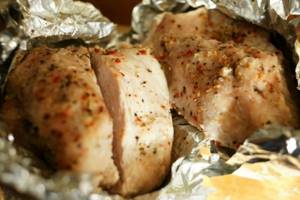
For preparation you will need the following ingredients:
| Grocery list | Quantitative measure | Weight/volume (g/ml) |
| Breast fillet without skin | 1 | 700 |
| Hard cheese (Dutch recommended) | — | 200 |
| Fresh lemon juice | — | 15-20 |
| Kefir with 1% fat content | — | 350 |
| Medium tomatoes | 2 | — |
| Turkey spices (any choice) with salt | — | 5 |
Description of the cooking process:
- Free the fillet from veins. Cut into pieces about 3-4 cm.
- Combine lemon juice with kefir and spices. Place the fillet in the marinade for 2 hours. Keep in the refrigerator.
- Place a piece of breast on the foil. Add a little marinade. Screw the foil on top.
- Bake in a preheated oven for 30 minutes. At a temperature of 200 degrees.
- Cut the tomatoes into small cubes. Grate the cheese. Connect the components.
- Add the tomato mixture to the breast 10 minutes before turning off the heat. You don't have to twist the foil.
The calorie content of the breast will be 170 kcal.
Vegetable stew with breast
The dish is rich in vitamins and is useful for dietary nutrition.
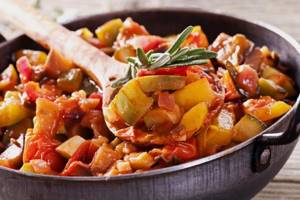
For preparation you will need the following ingredients:
| Grocery list | Quantitative measure | Weight/volume (g/ml) |
| Skinless breast | 1 | 500 |
| Medium tomatoes | 2 | — |
| Potato tubers | 1 | — |
| White cabbage or broccoli | 1 | 200 |
| Peeled carrots | 1 | — |
| Peeled onion | 1 | — |
| Garlic cloves | 2 | — |
| Sunflower oil | — | 50-70 |
| Turkey spices with salt | — | 5 |
Description of the cooking process:
- Clean the fillet from veins. Cut into small pieces (about 2 cm) and fry in oil.
- Tomatoes, carrots and cabbage, as well as potatoes and onions. Cut into cubes.
- Simmer the onions and carrots over medium heat.
- Add chopped garlic and tomatoes to the frying. Simmer for another 5 minutes.
- Place potatoes, fried fillet and cabbage in a cauldron or thick-walled pan. Simmer for about 20 minutes.
- Next, add the onion fry to the cauldron/saucepan. Add spices.
- Simmer for another 10 minutes.
If desired, you can add fresh dill. The calorie content of the stew will be 130 kcal.
Diet soup
The soup is low-calorie and nutritious. Recommended for use from childhood.

For preparation you will need the following ingredients:
| Grocery list | Quantitative measure | Weight/volume (g/ml) |
| Breast fillet, optional with skin | 1 | 300 |
| Potato tubers | 3 | — |
| Peeled carrots | 1 | — |
| Peeled onion | 1 | — |
| Broccoli | — | 200 |
| Drinking water | — | 1000 |
| Laurel leaf | 1 | — |
| Pepper peas | 3 | — |
| Table salt | — | 5 |
Description of the cooking process:
- Clean the breast fillet from veins. Cut into medium pieces.
- Place the fillet (with the skin on in a saucepan with cold water).
- Cook for about 30 minutes.
- Cut the potatoes into medium-sized cubes. Rinse to remove excess starch.
- Grate the carrots or cut them using a knife.
- Separate the cabbage into inflorescences. Rinse.
- After 30 minutes, add potatoes and cabbage to the broth. Cook for 15 minutes.
- Next you need to add onions and carrots (do not fry them). Cook for another 15 minutes.
- Add bay leaf, salt and pepper to the soup. Cook for 10 minutes.
- After the soup is ready, let it sit for another 10 minutes. When serving, you can garnish with fresh dill sprigs.
The calorie content of the soup is 70 kcal.
White turkey meat in other servings:
152
1.52
| Qty | A portion | Calories | In the counter |
| 100 g | 152 | ||
| 1 g | 1.52 | ||
| 689 | 1 lb = 453g | 689 | |
| 129 | 1 serving = 85g | 129 | |
| 129 | 3 oz = 85g | 129 |
Storage conditions and periods
Turkey breast (calorie content does not increase or decrease from different storage methods) when fresh does not spoil for up to 2 days, provided the fillet is in the refrigerator. If the meat is planned to be used within 7-10 days, then it must be stored in the freezer. When deep frozen (below 18 degrees), the breast can be stored for about 1 year.

Boiled, fried or baked turkey can be stored in the refrigerator for up to 4 days. If the product is stored longer than expected, it acquires an unpleasant rotten smell, the meat fibers separate between the fingers, and a slippery film forms on the surface of the fillet. This breast is dangerous to eat even after prolonged heat treatment.
Chemical composition of turkey
Nutritionists around the world note the enormous benefits of turkey meat, as it contains large quantities of various vitamins and minerals necessary for the health of the body. So, the composition of turkey meat includes:
- selenium;
- phosphorus;
- iron;
- zinc;
- magnesium;
- sodium;
- potassium;
- essential amino acids;
- B vitamins;
- vitamins R, PP, E.
We recommend reading: Why does the body need zinc, where it is found, daily requirement
Turkey meat has 2 times higher concentrations of iron and sodium compared to beef, and very little fat and bad cholesterol, which makes the benefits of this product undeniable in human nutrition, on a diet. And in terms of the content of no less useful selenium and phosphorus, turkey meat is not inferior to any fish.
It is believed that dark meat, namely turkey drumstick and thigh, is less beneficial than white meat. However, this is not quite true. According to recent studies, dark meat contains more selenium and zinc. The same goes for B vitamins and iron. In turn, white meat contains more protein and less cholesterol.
Menu for weight loss
When losing weight using a turkey-based diet menu, it is important to consider that it is recommended to consume breast meat no longer than 4 days.
Below is a sample menu plan for weight loss, taking into account the recommendations of a nutritionist.
| Meal time | Sample menu by day | |||
| 1 | 2 | 3 | 4 | |
| From 6 to 7:30 | Vegetable stew | Fresh cucumber and tomato salad | Oatmeal with water and fruits | Omelet with green beans |
| From 9 to 10 | Yogurt | Walnuts | Banana or grapefruit | Bread |
| From 12 to 13 | Boiled breast fillet with steamed rice | Boiled breast fillet with buckwheat porridge on water. | Breast fillet baked with vegetables | Stew with boiled breast and vegetables |
| From 16 to 17 | Fresh cabbage and carrot salad | Grapefruit or kiwi | Apple or banana | Pine nuts |
| From 19 to 20 | Stewed fillet with potatoes | Fillet baked with vegetables | Boiled fillet with green beans | Baked fillet with steamed rice |
| From 21 to 22 | Kefir | Compote with crackers | Kefir | Rosehip tea with dry biscuits |
During the diet, it is important to drink at least 1.5 liters of clean water. It will speed up the normalization of metabolism and the removal of toxins from the body. This will speed up the weight loss process.
Turkey breast is popular due to its rich nutritional content and minimal fat content. Properly selected and prepared fillet allows you to lose weight without feeling hungry or uncomfortable (without losing muscle mass). It is important that when creating a menu, you need to correctly calculate the calorie content of dishes based on the method of preparation.
Turkey thigh: calorie content, BJU per 100 grams, benefits
Turkey is a dietary meat that is recommended to be included in the diet for diseases of the gastrointestinal tract, as well as for weight loss. Poultry meat is rich in proteins and contains less fat than pork and beef.
Turkey thigh: calorie content and nutritional value per 100 grams
proteins, fats and carbohydrates depend on the serving, as well as additional ingredients and processing methods. Calorie content is also affected by the use of oil, dressings and spices.
With skin, without skin
Turkey skin is often used in cooking, but nutritionists recommend avoiding consumption. The benefits and harms of poultry with skin have not been fully determined.
per 100 grams of turkey with skin:
- 204 kcal;
- 15 g protein;
- 16 grams of fat;
- 0 g carbohydrates.
When losing weight, it is recommended to use turkey meat without skin.
nutritional value of raw product per 100 g:
- 113 kcal;
- 18.4 g protein;
- 4.1 g fat;
- 0 g carbohydrates.
during a diet, it is better to use the breast or thigh of the bird - the drumstick contains many tendons that “add” carbohydrates to the meat. Different fat deposition is also observed, which leads to an increase in fat (or decrease).
boiled
Boiled poultry meat is a necessary attribute of dietary nutrition. With this method of processing the product, the beneficial qualities are preserved, and the number of calories remains almost unchanged.
nutritional value of boiled thigh without skin per 100 g:
- 128 kcal;
- 14.1 g protein;
- 6.7 g fat;
- 0.4 g carbohydrates.
It is not recommended to add oil during cooking. To obtain a rich taste, it is recommended to use whole onions and carrots.
roast
During a diet, it is not recommended to fry in oil; it is better to use olive oil or not use it at all, which can cause the food to burn.
Nutritional information for roasted turkey thigh:
- 165 calories;
- 16 g protein;
- 7 grams of fat;
- 1.6 g carbohydrates.
kilocalories and nutritional value may vary depending on the auxiliary ingredients used (oils, spices, etc.).
thigh cutlets
It is best to cook steamed thigh cutlets while losing weight. This way you can significantly reduce the number of calories in a dish and maintain the original benefits of the product.
https://www.youtube.com/watch?v=p_68wA_LtI8
nutritional value depends on the products used in the dish.
Calculation of kilocalories and nutritional value per 100 grams of food:
- 160 kcal;
- 28 g protein;
- 4.7 g fat;
- 1.8 g carbohydrates.
standard set of ingredients - turkey thigh (without skin), onions, hard-boiled egg and table salt.
baked in the oven
using an oven is a simple but time-consuming method of processing. To bake a bird, you don’t have to use oil, just wrap the product in foil and add some vegetables.
nutritional value of the dish:
- 125 kilocalories;
- 28.55 g protein;
- 7.39 g fat;
- 0.06 g carbohydrates.
Baked turkey is not only a hearty dinner in everyday life, but also a delicious dish for the holidays.
thigh kebab
Cooking meat over charcoal is a way to process food without using oil, as well as an enjoyable pastime. The bird is hard, so you need to choose the right marinade.
the nutritional value:
- 100 calories;
- 15.1 g protein;
- 1 g fat;
- 2.3 g carbohydrates.
The size of kilocalories and nutritional value is presented for shish kebab with kefir marinade.
composition and benefits of turkey meat
Poultry meat contains many amino acids and protein, which are necessary for normal growth of the body. 1 serving of the dish contains half the daily value of selenium. Meat also contains macroelements such as copper, potassium, phosphorus, magnesium and zinc.
The product contains a lot of B vitamins: B9, B4, B3, B2, etc. In addition to nutrients, it contains unsaturated fatty acids (omega 3 and 6).
Turkey helps with cardiovascular diseases. The product also regulates all processes occurring in the body.
The use of meat in weight loss
Meat is actively used in dietary recipes. The most popular products are boiled, grilled and over open coals, and steamed diet cutlets.
Daily consumption rate
The benefits of eating turkey, like any other product, can result in harm to health, so it is important not to get carried away and not to exceed the norm for its consumption. Turkey contains about half the daily amount of protein needed by an adult. Protein is vital for the body to function properly, but too much of it can have negative effects on your health. Therefore, it is worth limiting the amount of turkey meat to 100 - 130 g per day.
Children from 1 to 3 years old are recommended to consume 50 - 70 g of meat per day. In this case, it is necessary to alternate meat dishes with products from other food groups.
Important! It is not recommended to eat meat products more than 4 times a week.
Which is healthier: chicken or turkey?
Chicken, like turkey, is considered a dietary product and is a favorite food of people who want to lose weight. But for all its popularity, chicken loses to turkey in terms of beneficial properties. Chicken meat contains almost the same amount of protein, but much less selenium, sodium and iron. It is also considered a strong allergen, unlike turkey meat, which does not cause allergic reactions.
Turkey is generally less harmful because turkeys on poultry farms are provided with a variety of types of food. Chickens are unpretentious and feed mainly on mixed feed, which affects the quality of the meat. Some unscrupulous poultry farmers often feed chickens with growth stimulants and chemical additives that can harm the human body, even if the meat has been thermally processed. Turkeys do not tolerate chemicals in their food very well, so a minimum of harmful substances are used when raising them. Therefore, turkey meat is healthier than chicken meat.
However, you shouldn't give up chicken completely. In addition to its wonderful taste properties, it contains Omega-3 and Omega-6 acids, which are very few in turkey meat. If you choose the right chicken, it will bring no less benefits than turkey.
Can pregnant and lactating women eat turkey?
Turkey dishes can be safely consumed by women who are breastfeeding and during pregnancy, since turkey is considered one of the few types of meat that does not harm the baby. It does not cause allergies, and the wide range of vitamins and minerals it contains will be equally beneficial for both mother and baby. Thus, choline and phosphorus stimulate the baby’s brain activity, and the high sodium content strengthens the mother’s nervous system, which is especially important for a woman during postpartum stress.
A nursing mother should gradually include turkey in her diet, starting with one small piece. It is best to boil or steam the meat. Then you should pay attention to the baby after feeding. If the baby has no allergic reactions and no indigestion, it means that his body has accepted the new product well and the portion can be increased to 100 - 150 g.
If your child has skin irritation or any signs of gastrointestinal problems, you should immediately limit your turkey consumption. After a few weeks, when the baby's stomach is more adjusted, you can try introducing meat back into the menu.
